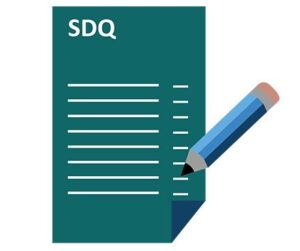Research at COMIC
At COMIC we work with children, young people and their families to bring together ideas and carry out research that will drive forward the development of new and exciting ways to improve wellbeing and support their mental health. Our experienced research team work together with local schools, medical staff, university researchers and external partners (such as charities) to make sure that we are at the cutting edge of children and young people's mental health research.
Find out more about our recent projects by clicking the tabs below.
Neurodiversity

CONIFAS
CO-produced Nature-based Intervention Feasibility for children with ADHD Study (CONIFAS-2)
The CONIFAS2 study builds on a successfully completed tier 3 RfPB study called CONIFAS-1 (NIHR203043) that co-produced a nature-based activity box for children with ADHD. The CONIFAS nature activity box is a home-based, family-led activity delivered with professional third-party telephone support. It encourages daily engagement with nature for at least 10 minutes, including activity cards and supportive psychoeducational elements. CONIFAS is ready to be tested in NHS funded neurodiversity services assessing the feasibility and acceptability of a full-scale effectiveness trial.
The overarching aim of the CONIFAS2 study is to conduct a feasibility RCT of the CONIFAS intervention in NHS Children’s neurodiversity services. The specific objectives will address uncertainties regarding:
- The feasibility and acceptability of trial processes related to recruitment, randomisation, collecting health/wellbeing outcomes, delivery methods, and health economic outcomes.
- The feasibility and acceptability of delivering CONIFAS in neurodiversity services; experiences of children and their families of receiving and staff experiences of delivering the intervention.
- How the intervention will be embedded into practice to understand how context affects implementation and outcomes.
To achieve these aims, a multi-centre, mixed method randomised controlled feasibility trial will be conducted with embedded process evaluation utilising qualitative interviews and visual methods to support data collection (e.g., photo elicitation).
A patient and public involvement (PPI) group will guide the study alongside the co-applicants. The PPI group will consist of 8-10 parents and their children with ADHD diagnosis. Previous co-production children, parents and guardians will be invited to take part. This group will meet on 8 occasions throughout the study with face-to-face meetings to take place in a Kids charity venue with a celebration event at Barlow Common Nature reserve.
For further information, please contact Ellen Kingsley (Trial Coordinator) at e.kingsley@nhs.net or 07870992859.

Soundfields
This study looked at whether Virtual Reality (VR) can help autistic children with sound hyper-sensitivity.

I-SOCIALISE
Investigating Social Competence and Isolation in children with Autism taking part in LEGO® based therapy clubs In School Environments.
This study examined whether LEGO® based therapy (play brick therapy) groups in schools have any impact on the social and emotional competence and perceived social isolation of autistic children. The research also aimed to look at whether it is cost-effective for schools to run and whether the young people and school staff like it.

ASSSIST2 – (Autism Spectrum Social Stories™ In Schools Trial 2)
This study investigated if Social Stories™ can support autistic children at school and if they are cost effective.

MARS
A project to investigate whether microRNAs can be used as biomarkers in autism.
The Deaf experience

Diagnostic Instruments for Autism in Deaf children’s Study (DIADS)
Modification of diagnostic assessments to improve autism diagnosis for Deaf children.

Attachment
A systematic review of early interventions for parents of Deaf infants – a systematic review of the research evidence for early parenting support interventions of Deaf infants.

Engaging with the Deaf community
Raising the awareness of British Sign Language Engaging with the Deaf community – Raising awareness of British Sign Language.
Page last updated: 5th Nov 2025 1:01pm


Social and emotional wellbeing
This study investigated whether One Session Treatment vs Cognitive Behaviour Therapy was effective for treating specific phobias in children and young people.
The DIVERT study is now complete (as of June 2025). Thank you to all the young people, parents/carers, and professionals who participated in and led the research with us, it would not have been possible without you!
About DIVERT
DIVERT was a co-production research study looking at self-help toolkits for young people with experience of difficult or big emotions which have led them to hurt themselves. The aim of the study was to understand how self-help toolkits can help and to create guidelines for their use by working with young people with lived experience, parents/carers, and professionals in relevant fields.
To do this, a co-production group of young people, parents/carers, and professionals in relevant fields was formed to understand more about self-help toolkits and how they can be used by different people. Five focus groups were then help with separate groups of young people, parents/carers, and professionals in relevant fields to understand the specifics of toolkit use including who, how, why, where, etc. Information from these focus groups was then taken back to the co-production group who used this information to develop guidelines and additional resources needed for the use of self-help toolkits.
From the discussions and activities in the workshops and focus groups, several important elements for the use of self-help toolkits became clear including early introduction to a wide range of individuals. Guidelines for self-help toolkit use have been developed as well as additional resources including videos, leaflets, guidance documents, and a logic model showing how toolkits work (see below).
The study team intends to take this research forward to look at the use of self-help toolkits in specific contexts based on the information gained in this study. Any future work will be carried out in partnership with young people and will reflect lived experience input.
This study was run by COMIC from the Leeds and York Partnership NHS Foundation Trust in partnership with a Trust Occupational Therapist, a Confidence Consultant with youth work experience, and academics from York St John University, Cardiff University, and Northumbria University at Newcastle. It was funded by the NIHR’s Research for Patient Benefit funding stream (NIHR205363). The views expressed in this summary are those of the authors and not necessarily those of the NIHR or the Department of Health and Social Care.
About self-help toolkits
Self-help toolkits are known by a variety of names, including self-soothe box, hope box and coping kit. The toolkits contain personal objects, prompts to promote self-agency, distress tolerance and help seeking strategies. The aim of creating and using a self-help toolkit is to:
Improve self-awareness
Example content could include:
Instructions on how to create a self-help toolkit and further options for content are available at: https://www.youngminds.org.uk/young-person/blog/how-to-make-a-self-soothe-box/